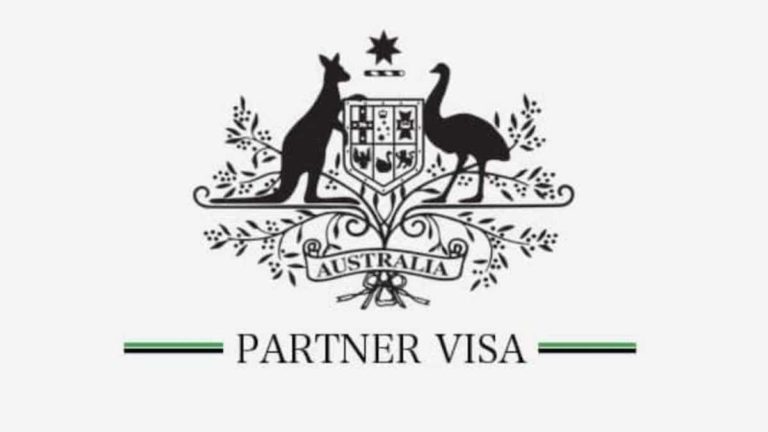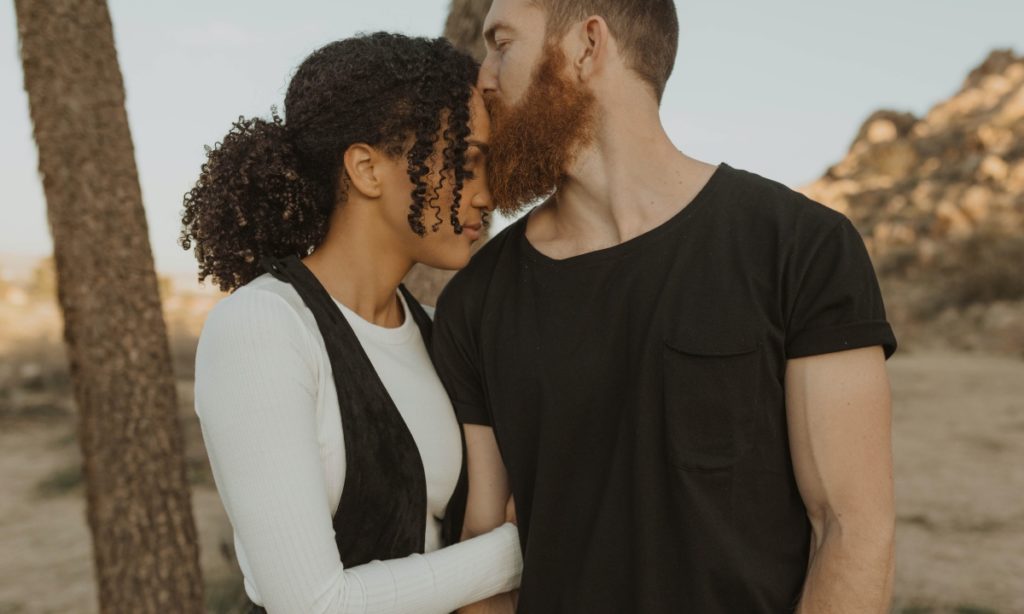
Reuniting with your partner in Australia is an exciting prospect, yet the process requires careful planning and understanding of the legal requirements. The Australian Partner Visa allows partners of Australian citizens or permanent residents to join their loved ones in Australia, potentially leading to permanent residency. This article delves into the key aspects of applying for a Partner Visa, including eligibility conditions, associated fees, and the application steps.
Note : The Partner visa classification varies depending on whether you are applying in Australia (visa 820-801) or outside Australia (visa 309-100). Conditions and procedure are identical, only the visa subclass changes.
The Partner visa application is divided in two steps. First, you apply for a temporary visa (subclass 820 or 309). Two years later, from the date you submitted your first application, you are allowed to apply for the permanent residency (Subclass 801 or 100).
Table of Contents
Eligibility conditions to apply for a Partner visa
To be eligible for a Partner Visa, applicants must be in a genuine and continuing relationship with an Australian citizen, permanent resident, or eligible New Zealand citizen. The relationship can be a marriage or a de facto partnership, including same-sex relationships. Applicants must prove:
- The legitimacy of the relationship through shared financial responsibilities, cohabitation, social recognition, and mutual commitment.
- They have been in the relationship for at least 12 months (for de facto partners) unless there are exceptional circumstances.
Visa Categories
Subclass 820/801: This visa pathway starts with the temporary 820 visa, allowing you to stay in Australia while your permanent 801 visa application is processed. The 820 visa is the first step and grants temporary residency, and after a specified period, applicants can transition to the 801 visa for permanent residency.
What a Partner visa allows you to do
What the 820 or 309 visa allows you to do
It is the first step in the Partner visa application. A subclass 820 or 309 allows you to :
- Live in Australia until a decision is made concerning your permanent visa
- Work in Australia
- Study in Australia (without receiving government funds)
- Apply for Medicare
- Travel in and out Australia as many times as you wish
On the visa subclass 309, you can also get free English classes (up to 510 hours!).
As soon as your partner visa has been approved (subclass 820 or 309), you get permission to stay in Australia permanently (Permanent Residency).
What the 801 or 100 visa allows you to do
This is the second step in the process. Two years after applying for a 820 or 309, you can apply for a 801 or 100 visa. This will allow you to :
- Work and study in Australia
- Apply for citizenship
- Receive social payments from the government (Centrelink, Child Support,…)
- Travel to and from Australia during five years from the starting date of your visa. After five years you will have to apply for a specific visa to keep travelling.

How to apply for a Partner Visa
Visa application process
- Gather Evidence: Compile comprehensive evidence of your relationship, including financial records, joint accounts, lease agreements, and social evidence like photographs and statements from friends and family.
- Health and Character Checks: Both partners must undergo health examinations and provide police certificates as part of the character requirements.
- Apply Online: Applications for the Partner Visa are submitted through the Australian Department of Home Affairs’ online platform. The application must be completed accurately, with all necessary documents attached.
Documents required
You will have to prepare a fair amount of documents to prove the authenticity of your relationship. A checklist is available on the government website, going from ID documents to a category “Proof of the authenticity of the relationship”. This last part, very important but also extremely subjective regroups a large selection of documents (photos, personal messages, history of the relationship, etc.).
Documents are divided in thematic:
- Forms about the applicant and the sponsor (47SP and 40SP), respectively 30 and 15 pages. You will be giving information about your identity, your family, your way of life, your incomes but also how you and your partner met, etc.
- Statutory Declarations from family members or friends, witnessing the legitimacy of your relationship
- Official documents justifying the existence of the relationship. It can be a certified copy of your wedding certificate or one from the certificate received after registering your relationship in front of the Australian government.
- Health and character requirement. You will have to go to a medical with specific examinations depending on your native country and the countries you have visited. You will also need to fill in a 20-page form about yourself (all your addresses since you are born, all your travel destinations for the past 10 years). Finally, you will need to send a police check for all the countries you lived in for more than a year, for your native country and Australia.
- ID documents for the applicant and the sponsor (passport copy, certified and translated by a certified translator, if not in English, copy of your birth certificate, two passport format pictures, etc.)
- Proof of the authenticity of the relationship. Documents concerning the financial aspect of the relationship, the organisation of your daily life at home, your social life as a couple, your projects and your implication in the relationship. You will be asked for a written story about your couple, to send invoices, to explain how you share the chores, to speak about your going out life together, your travels. You will need to prove you have been in Australia for more than a year and show you always kept contact everytime you took time away from each other.
All proves can be provided, from bank statements to the picture of your pet or the invoice for your partner’s last birthday present. However avoid to send too much proof of the same type (50 pictures of your partner and your parents, 30 restaurants receipts, etc), one is enough!
Remember also that when you apply online you can only attach 60 files to the application.
The visa application
Once your documents gathered, you can submit your application:
- Online via your Immi Account
- Via the Post office
- In person (there are immigration offices in all big Australian cities)
Once your application sent, you will be notified of the reception of the documents and transferred on a bridging visa (it can take a few weeks). A long waiting period starts, you probably won’t have any news from the government for the next few months.
Important note
If you are in Australia while applying, your Bridging visa will allow you to stay on the territory until you receive an answer. Be careful, during this period you aren’t allowed to leave the country. You will have to ask for a specific Bridging visa (B) to be allowed to leave the country for a certain period (you will have to pay at least $155 for this visa).
Include family members
You can include members of your family unit in your application when you lodge your visa application, or add a dependent child after you lodge your application but before getting a reply for your temporary visa.
Family members who apply with you must be in Australia and meet the health requirement and character requirement.
If you hold or have held a Prospective Marriage visa (subclass 300), you can include family members when you apply for this visa. However, you cannot add them after you submit your application.
Your rights if your application is accepted
Once your application accepted, you will receive a temporary visa. Two years after the submission of your first application (and not from its approval) you will be able to apply for the permanent residency (Subclass 801 or 100 depending on if you are in Australia or outside Australia when applying for the visa). You won’t have any additional costs for this visa. However, you might be asked for further medical examination (at your charge). You might also be asked for more information concerning your relationship, to make sure it is still genuine and continuing.
Note that you can obtain your permanent residence directly (i.e. without going through temporary residence) if you prove that your relationship has lasted for more than 3 years at the time of your visa application or if you have a child in common.
Cost of the Partner visa
The cost of the Partner visa is $8,850 (fees as February 2024) for the main applicant. There is also a fee for each family member that applies for the visa with you. It’s important to note that this fee covers both the temporary and permanent visa applications and is payable at the time of submitting the initial application.
Unfortunately the price only includes the visa application; it doesn’t include all the extra costs.
This amount isn’t reimbursable, even if you don’t get your visa. If your visa is not approved you will have the option to appeal this decision.

Processing time
The processing time for Partner Visas can vary significantly based on application volume and individual circumstances. It’s crucial to ensure that your application is as detailed and accurate as possible to avoid delays.
The processing time for a permanent Partner visa starts from the date of eligibility. This is 2 years after you applied for the combined temporary and permanent partner visas. Processing times are updated regularly on the immigration website. All applications are assessed on a case by case basis.
It is possible that the government is going to contact you while processing your visa to ask for additional documents, to undertake some medical examination. Check your Immi Account often as well as your emails to answer their request as fast as possible.
Using a migration agent
You have probably heard from the migration agent and if you can afford one, you will avoid a lot of stress and nightmares.
However, be careful and choose a competent agent. Indeed, the risk is to find an agent who is going to ask you to do all the work. It would be a shame to spend that much money to end up doing the entire job yourself and get told to check the immigration checklist! You need someone helpful and trustworthy. The objective is to help you administratively, psychologically and to give you numerous tips to make the process easier.
Prices also vary a lot and aren’t usually available online. You will have to contact the agent for more information. Usually the fist consultation will cost you around 180$ (for an hour). Many agents offer a starting price of around $1000 to check your application is ready before submission. Complete services start around $4000. You can also decide to pay an hourly rate, usually around $100/hour.
Also note that even if the price seems high, the preparation of a Partner visa application is long and complicated. Your agent will need weeks and sometimes months to organize all the documents.
Tips
Frequently asked questions
The partner visa in Australia is a visa that allows a spouse or de facto partner of an Australian citizen, Australian permanent resident, or eligible visa holder in Australia to live, work, and study in Australia.
The eligibility requirements to obtain a partner visa in Australia mainly include evidence of a genuine and durable marital or de facto relationship, meeting the minimum age requirements, and satisfying health and character criteria.
The processing times for partner visa applications in Australia vary, but generally, it will take several months, or even years.
Yes, once you have obtained a partner visa in Australia, you are authorized to work and study in Australia.
The “temporary partner visa” is initially granted for a specified period and allows the spouse or de facto partner to reside in Australia temporarily. Once certain conditions are met, the application can be updated to a “permanent partner visa,” which offers permanent residency in Australia.
Yes, partners outside Australia can apply for the Subclass 309/100 Partner Visa, which follows a similar process but is designed for applicants outside Australia.
For more information consult the Australian immigration website:
- Partner Visa 820 (Temporary)
- Partner Visa 801 (Permanent)
- Partner Visa 309 (Provisional) & 100 (Migrant)
For more information about different kinds of visas, consult our visa section.




























